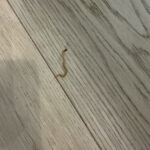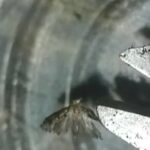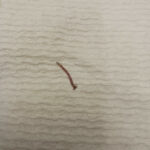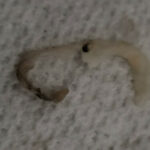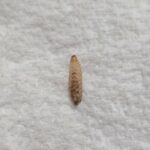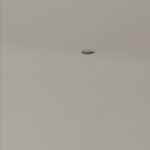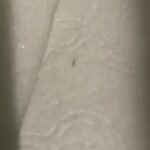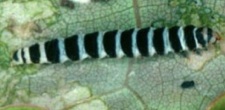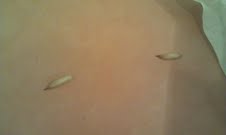Moth fly larvae, millipedes, and centipedes – these are just few of the many pest that may invade your home at anytime. If you have seen any type of creature crawling in and around your drains, pipes, or ceiling, there is a good chance it was the larvae of the moth fly.
Moth flies, also called drain flies, filter flies, or sewer flies, are grayish or dark. They have hundreds of fine hairs covering the wings and the body. You can find moth flies resting indoors with their wings held over their bodies, like a roof. They can be found resting on bathroom walls and around drain-like surfaces. The larvae are less than ¼ of an inch long. They have small suction discs along their bellies to help suction to slippery surfaces. They have a distinct head and a somewhat flattened body. They do not have legs.
The larvae of moth flies like to hang around drains, within drains, underneath drain plugs and screens, and inside of pipes. They feed on the gelatinous film found in these areas of bathroom sinks, tubs, and toilets and well as kitchen sinks. Moth flies develop in four stages: egg, larvae, pupa, and adult. Moth flies have many generations each year and they occur anytime of the year in moist coastal regions – indoors and outdoors. Moth flies are common outdoors during the winter and spring months in California – mainly the interior areas.
If you want to avoid a moth fly infestation, there are several management methods you can use. You should screen windows and doors and reduce moisture and organic debris. To keep moth flies from multiplying, fix leaking plumbing immediately. You should also clean muck that collects in drains or under dripping taps, and brush or wash away slime under drain plugs, screens, and inside the top of drainpipes, above the water level in the J-trap.
Biological control agents are also available for outdoor use as well as insecticides. B.t. (Bacillus thuringiensis) is a popular biological control agent. It is a naturally occurring soil bacterium that produces poisons, which cause disease in insects. B.t. is considered ideal for pest management because of its specificity to pests and because of its lack of toxicity to humans or the natural enemies of many crop pests. Trade names include Acrobe, Bactospeine, Berliner (variety kurstaki), Certan (variety aizawai), Dipel, Javelin, Leptox, Novabac, Teknar (variety israelensis), Thuricide, and Victory. Insecticides can be used outdoors, but they are not recommended for use in the home.
About Immature Millipedes
If you’ve ever seen a worm-like creature, with what appears to be more than 100 legs, racing across your kitchen floor, chances are it wasn’t really a worm. While it’s easy to mistake these leggy creatures for worms due to their elongated segmented-like bodies, the more accurate you are at identifying them, the better you will be at controlling a possible infestation. This worm-like creature can pass for a worm if you’re not paying attention, but the truth is, it’s actually an immature millipede.
When millipedes first hatch, they only have around three pairs of legs, giving the appearance of a worm. Keep in mind that the millipede’s legs multiply rather rapidly. Additional millipede legs grow after each molt. Millipede eggs are either white, creamy yellow, or brown. They are smooth and spherical, and toughly 0.4 mm in diameter. Because of a sticky secretion, millipede eggs adhere in clusters. Millipede larvae are smaller than adults, of course.
Adult Millipedes
Adult millipedes range in color from gray to brown. These arthropods are worm-like with cylindrical bodies. They are typically 13 to 38 mm long with a pair of short antennae. The adult millipede has at least 30 pairs of legs, although it can look like they have much more. So much more that the millipede earned the nicknames thousand-legged worm, thousand-legged spider, and hundred-legged worm. Millipedes have a large number of segments with at least two legs attached to most body segments. While it may look like millipedes mover at warp speed, they actually move very slowly as their legs move in a wave-like motion.
Although millipedes and centipedes may look alike at first glance, a second look will reveal many differences. Centipedes have flattened bodies and a pair of long, slender antennae. They also have a pair of claws just behind the head. Centipedes have roughly 15 pairs of long legs and only one pair on most of its body segments. Centipedes are the faster of the two, so they are tougher to catch.
Where Millipedes Live and What they Eat
Millipedes (and centipedes) live in just about every part of the world. Millipedes prefer to live in dark, damp places, while centipedes prefer places where they can hunt for insects and spiders. The millipede prefers to eat moist, decaying organic matter. Chances are, most people will come across a millipede and not a centipede, specifically the greenhouse millipede.
What Damages can Millipedes cause?
The types of millipedes and centipedes that enter homes usually do not bite. They do feed on vegetation and they can do damage to turf. Just because millipedes don’t bite, this doesn’t mean that these arthropods are welcome visitors. If you see many of them in a short period of time, they can become a nuisance.
How to Control Millipedes
One of the easiest ways to control millipede populations is to take away their food and shelter source. If you destroy their feeding and breeding grounds they will hunt for another place to dine and reproduce. Other ways to control millipede populations in the home is to repair (seal) splits and cracks in foundation walls, and around doors, basement windows, and similar openings. Properly ventilated basements and crawl spaces are a turn off for millipedes (and centipedes) as well. And finally, some basic cleaning should help as well. If you remove food sources, clean the spaces where you see them the most, repair cracks, and destroy all food and shelter sources and you still see a millipede or two here and there, you can try chemical control. Visit any hardware or home and garden retailer to browse through a number of effective options.
All About Worms is always free, always reader-supported. Your tips via CashApp, Venmo, or Paypal are appreciated! Receipts will come from ISIPP Publishing.



